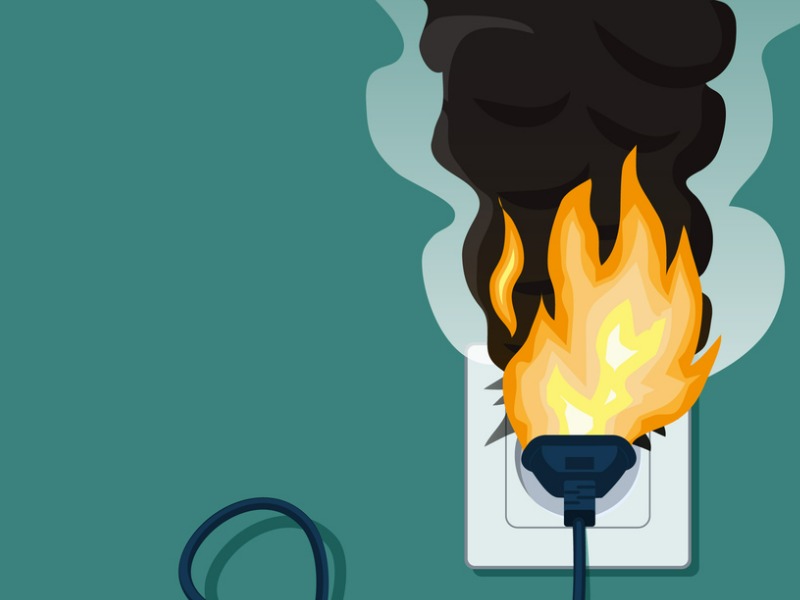Managing insurer concerns about knob-and-tube wiring

Most insurers see homes with knob-and-tube wiring, aluminum wiring, and 60-amp service as high-risk, which prevents clients with those systems from easily obtaining home insurance. But are wiring types and service levels really the culprits causing fires?
I’ve examined electrical systems in thousands of older houses and find knob-and-tube, 60-amp service, and aluminum wiring rarely cause fires. Often, these wiring types don’t need replacing to keep a house safe, provided the wiring’s maintained correctly.
But hidden electrical fire hazards exist in most older houses and homes built before 1975 are particularly at risk of electrical fires.
Wiring history
Before 1950, knob-and-tube was a standard method of house wiring. It involves single insulated copper conductors running within wall or ceiling cavities and passing through holes drilled into joists and studs via protective porcelain insulator tubes. The conductor wire is supported along the joist lengths on porcelain knob insulators.
People selling homes built before 1950 often present them as having no knob-and-tube, because the outlets have often been upgraded to modern wire. However, in the thousands of houses my company has examined, it’s rare to find absolutely no knob-and-tube wiring in homes built before 1950.
Even when the outlets have been upgraded with modern wire, knob-and-tube remains and is actively powering the ceiling lights. So, the best approach when dealing with an older home is to assume there is some knob-and-tube unless documents show the building has been fully rewired and inspected.
If properly cared for, and not corrupted by do-it-yourself electrical repairs, knob-and-tube is a solid power system using soldered, wire-to-wire connections. These are highly robust because soldered electrical connections stay tight and do not deteriorate over time. Plus, knob-and-tube can handle modern electrical appliances equally to any current electrical cable.
One common problem affecting wiring in older houses is rodents, which love to eat the insulation on electrical cables. But the knob-and-tube installation method – with the two electrical conductors spaced far apart – prevents sparks in case rodents eat the insulation.
Obtaining insurance
Houses with knob-and-tube can often be brought into compliance with safety standards without a full wiring replacement. In homes we’ve inspected, our teams found:
In 99% of houses built pre-1950, knob-and-tube was present and active, even it homeowners weren’t aware.
In most cases, the knob-and-tube wires were in fine shape and did not need replacing. However, ground protection via a ground fault circuit interrupter (GFCI) was required.
There were electrical fire hazards unrelated to knob-and-tube – usually due to incorrect do-it-yourself work.
Often, the main fire hazard is not specifically related to knob-and-tube, but rather because of the lack of grounding. If the wiring is sound, which it usually is, modern GFCI receptacles can be added to the home’s circuits. This inexpensive fix provides the necessary ground protection without rewiring.
The primary fire risk in older houses arises when unqualified people add outlets or lights without an electrical permit. When these circuits are added to the knob-and-tube, they can be dangerous.
Knob-and-tube was intended for both wall outlets and ceiling lighting up to 60 watts. Wiring systems replacing knob-and-tube throughout the 1950s and 1960s were also designed for light fixtures with bulbs no greater than 60 watts. But if a homeowner began using 100-watt light bulbs, chances are the wiring behind those fixtures will overheat and need to be replaced.
When insurers are willing to provide coverage, a homeowner can help manage their premiums by obtaining a thorough inspection of a home’s knob-and-tube circuits to ensure no overheating or splicing has taken place.
Brian Cook is a master electrician and founder of Vancouver-based PowerCheck Electrical Safety Services. This article is excerpted from one appearing in the February-March 2024 print edition of Canadian Underwriter. Feature image courtesy of iStock.com/SpicyTruffel







